-
Par metanoia1 le 23 Septembre 2010 à 14:51
The Traditionalists: Guenon, Schuon, and Coomaraswamy



The history of religion and philosophy is not quite the same thing as a contracted perennial philosophy, though some form of philosophical extension can be useful. In this respect, my own views and conclusions do not converge with those of well known writers like Frithjof Schuon or Ken Wilber. Briefly, Schuon represents the “traditionalist” model of “religio perennis,” while Wilber represents the neoperennial “integral” approach. These two exponents are generally considered to be at opposite ends of the spectrum of exegesis. Their followers tend to insinuate that these interpreters have more or less expressed the last word on the subject, though disagreements are possible. Wilber’s version has recently been contested by some of his former supporters in a rather notable controversy.
Ananda K. Coomaraswamy (1877-1947) is another well known exponent, nearer to Schuon than to Wilber, though some differences in output are clearly discernible. A critical version of Coomaraswamy may be found in one of my early works (The Resurrection of Philosophy, pp. 234-244). I could doubtless improve upon that now (it was written in 1984-5), but the approach suffices as evidence of some basic disagreements in outlook. I sympathise with the complaints of Coomaraswamy about the superiority complex of Western nations, though as compensation he did enjoy a privileged position at the Boston Museum of Fine Arts for three decades until his death. He had a Ceylonese father and an English mother. He was a very erudite art historian who wrote many learned articles which are still of significance (see Roger Lipsey, ed., Coomaraswamy, 3 vols, 1977), though some assessors have been disconcerted by the influence of the Neo-Scholastic movement associated with Aquinas. It is this sort of theological colouring which has provided a bone of contention.
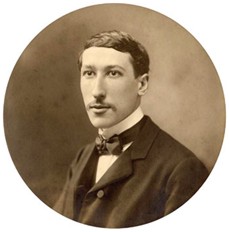
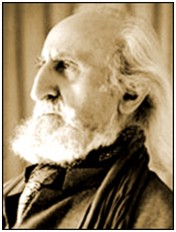
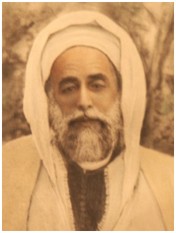
l to r: Rene Guenon, Frithjof Schuon, Shaikh Ahmad al-Alawi
There is no doubt that Frithjof Schuon and Rene Guenon (1886-1951) created interest in Sufism, which served to counterbalance the predominant Western popular focus upon occultism and Theosophy. Guenon was the originator of that trend. This French Roman Catholic converted to Islam and Sufism during 1911-12 in Paris. He was not insularist and believed that other religions were derivatives of a universal truth, though having suffered distortions. He started to write books in the 1920s, and expressed strong criticisms of Western society. In 1930 he settled in Cairo, his second wife being an Egyptian Muslim. He lived in Egypt for the rest of his life as a Muslim Sufi with the name of Abdul Wahid Yahya.
The 1920s output of Guenon influenced the German Frithjof Schuon (1907-1998), who corresponded with Guenon for many years until they met in Egypt during 1938. Schuon had earlier visited Algeria in 1932 and there encountered Shaikh Ahmad al-Alawi (1869-1934), a Sufi figurehead representing the Shadhili dervish tradition. Alawi showed an unusual respect for Christians, and had travelled to France in 1926. Alawi preferred to reconcile Islam and modernity, and even favoured the controversial practise of translating the Quran into French. One of Schuon’s followers later contributed an academic work on the Algerian. See Martin Lings, A Sufi Saint of the Twentieth Century: Shaikh Ahmad al-Alawi (1961; new edn,1993).
Schuon later spent much time in America, where he demonstrated an empathy for the Plains Indians, being adopted by Sioux and Crow families. Probably his most well known book is The Transcendent Unity of Religions (1953). His influential follower Martin Lings (d.2005) subsequently contributed a biography of the prophet of Islam which gained acclaim in the Muslim world. See Lings, Muhammad: His Life Based on the Earliest Sources (1983).
Along with Schuon and Guenon, Coomaraswamy is regarded as one of the three founders of perennialism or the “Traditionalist School.” Yet his writings are very different from those of Guenon, exhibiting more scholarship. Guenon neglected Buddhism, but Coomaraswamy integrated this factor. Guenon dwelt primarily upon Christianity, Islam, and Hinduism, and was critical of Buddhism as a Hindu heresy, having been misled by some Hindus he had encountered. It was not until 1946 that he confronted this matter, which worried some of his acquaintances, including Schuon and Marco Pallis. Guenon acknowledged the error, and Pallis emphasised that there were many pages in the books of Guenon that needed revision accordingly. See the relevant entry by Martin Lings on Rene Guenon at http://evans-experientialism.freewebspace.com/martin_lings.
Guenon had disowned being a philosopher, and tended to support the caste dogmas of Hinduism, a gesture which has been viewed by some commentators as a serious flaw in his exegesis. Cf. http://en.wikipedia.org/wiki/Rene_Guenon. Whereas Coomaraswamy moved at a tangent in his attempt to demonstrate the unity of Vedanta and Platonism. That was a difficult assignment, and is still harassed by some popular beliefs about Plato and the Greek Neoplatonists which have no secure basis.
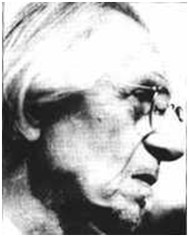 Coomaraswamy
Coomaraswamy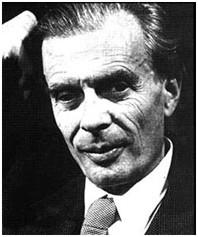
Aldous Huxley
The Aldous Huxley Backslide
By far the most well known work in the genre under discussion was Aldous Huxley’s The Perennial Philosophy (1945). Huxley (1894-1963) was a controversial British novelist who became celebrated in America. He became a resident of California in the late 1930s. His book on perennialism was influenced by Coomaraswamy and others, and is well known for such definitions of the subject as: “the psychology that finds in the soul something similar to, or even identical with, divine Reality” (The Perennial Philosophy, p.vii). A decade later, Huxley settled for the psychedelic imitation of lofty themes he had promoted. He resorted to mescaline in 1953, and took his first dose of LSD in 1955. Huxley retained the psychedelic habit until his death.
Huxley’s book The Doors of Perception (1954) advocated mescaline usage. That book exerted a damaging influence, being favoured by the 1960s psychedelic wave; some commentators have described it as one of the major texts used by the American drug enthusiasts like Timothy Leary. The retrograde influence of Huxley was facilitated by his lectures in the early 60s at the Esalen Institute of California, a venue that became a seedbed for the Human Potential Movement. (See Shepherd, Minds and Sociocultures Vol. One, 1995, pp. 148ff.). Ever since that period, the “perennial philosophy” has been a toy of the psychedelic mentality, though some LSD enthusiasts have duly separated their pursuit from the “contemplative” route. The differences are very obvious. Another distraction was that numerous clients attended new age “workshops” which created further sensations and delusions such as “self-realisation.”
Divergences and Alternatives
In a very different sector, critics reacted to the emerging Schuonite insistence that a spiritual path is inseparable from a revealed religion. Schuon was believed to represent Sufism, Vedanta, and Platonism, though the Greek philosophical tradition is not associated with a revealed religion. The subject of perennialism has to be carefully probed. The emphasis upon a unity of religions is an attractive theme, and there is surely nothing wrong when this leads to an intercultural empathy with American Indians, Muslims, and Hindus. The vexations relate to a wider scheme of definitions, in contraction of which the Guenonian neglect of Buddhism is one example. Another point of disagreement is that Schuon strongly criticised Swami Vivekananda (d.1902) from the standpoint of a rather inflexible authoritarianism (Shepherd, The Resurrection of Philosophy, 1989, pp. 247ff.). Ironically, Vivekananda was strongly associated with the sanatana dharma, the “eternal religion” of Hinduism esteemed by Schuon. It is clear that different interpretations of traditional concepts provoke disagreements.
 Suivre le flux RSS des articles de cette rubrique
Suivre le flux RSS des articles de cette rubrique
